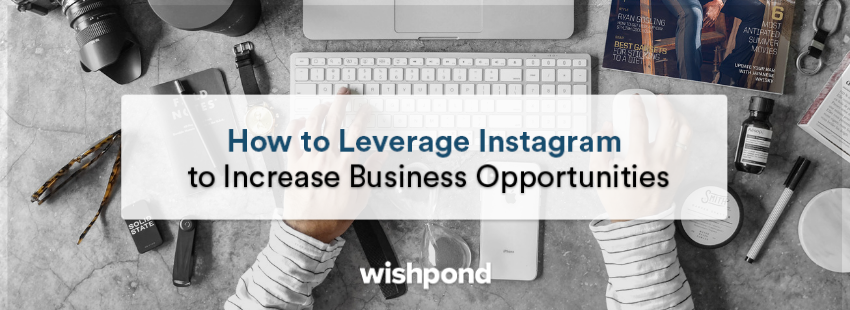Did you know that 71% of businesses claim that they use Instagram?
This is a clear sign that most companies consider that being active on Instagram is key for their business.
Having said that, almost 1 in 2 businesses say they are not able to measure the results of their efforts on social media (MDG Advertising, 2018).
While these two stats aren’t directed related, this implies that businesses can’t really see the ROI social media is bringing – neither can they identify what works best to turn their social media community into customers.
Well, 3 billion-plus people use social media in 2019. And 1 billion more are reportedly using Instagram, the social media platform with the highest engagement ratio out there.
Not understanding the potential of such a large medium could mean you’re not leveraging its true potential. This can eventually lead to you missing out on huge business and sales opportunities.
As a business, you wouldn’t want that to happen.
In this blog post, you’ll learn how to measure and understand the results of the time and money you invest in Instagram.
I’ll also share the best practices to use this knowledge to turn more of your followers into customers.
1. Listen to learn about yourself, your audience and competition
If there’s one thing that I’ve learned from my various experiences as a marketer, it is that knowledge is power.
Knowing exactly what’s going on around you will always give you a significant advantage over your opponents.
Now, with billions of interactions happening every day on Instagram, it’s simply impossible for our brains to process all the information out there.
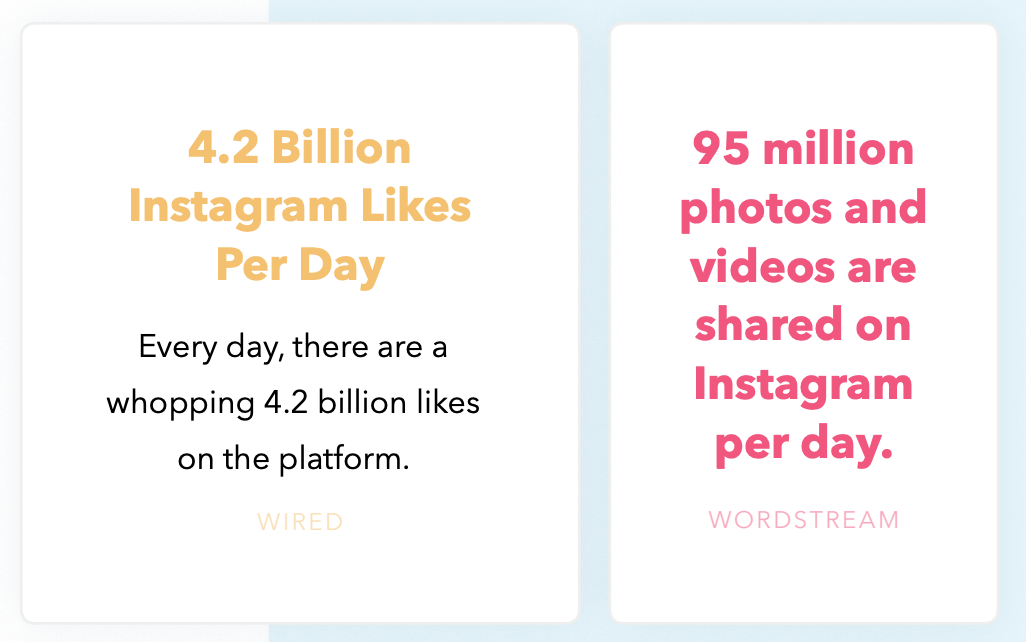
It’s just not possible.
And this is where social listening comes in.
There are hundreds of tools that can help you with this. Free options are a great way to begin your monitoring journey. But you eventually get what you pay for, and free tools obviously come with limitations. Past a certain point, you’ll need an advanced tool.
Before we start chatting tools, let’s make sure we have a good understanding of what social listening is.
–
What is social listening? How does it work and how is it valuable?
Put simply, social listening can uncover all that’s said about your brand, competitors, and industry on social media, as it happens. A social listening tool does that by crawling social media to highlight all relevant conversations about whatever you’re tracking.
And there are two types of conversations happening out there.
Those mentioning your brand directly, just like this one with @Oatly, or simply mentioning your name.

In the latter situation, Riverdel Cheese (30K+ followers) is sharing a fun post featuring Oatly’s ice creams, without directly @mentioning the brand. The post received a lot of engagement from fans. This is important. In fact, a study from IAB Study (2013) found that 90% of consumers say they are likely to recommend a brand following a positive interaction on social media.
So, in an ideal world, @Oatly would reach out, say thank you and engaging with both the brand and its followers.
Social media is all about reputation. The more likable your brand is, the better.
But unless you have a full-time employee or a team dedicated to find and manage these conversations, you’re better off using a social media monitoring tool so you can focus your energy on what really matters.
Let’s say you’re Apple, and you’d like to monitor all conversations about your brand and products.
First things first, you do not want to monitor all conversations including the term “apple” – you’d be overwhelmed with irrelevant discussions about fruits, colors, jams, … you name it. 28M posts is a lot of data to process.
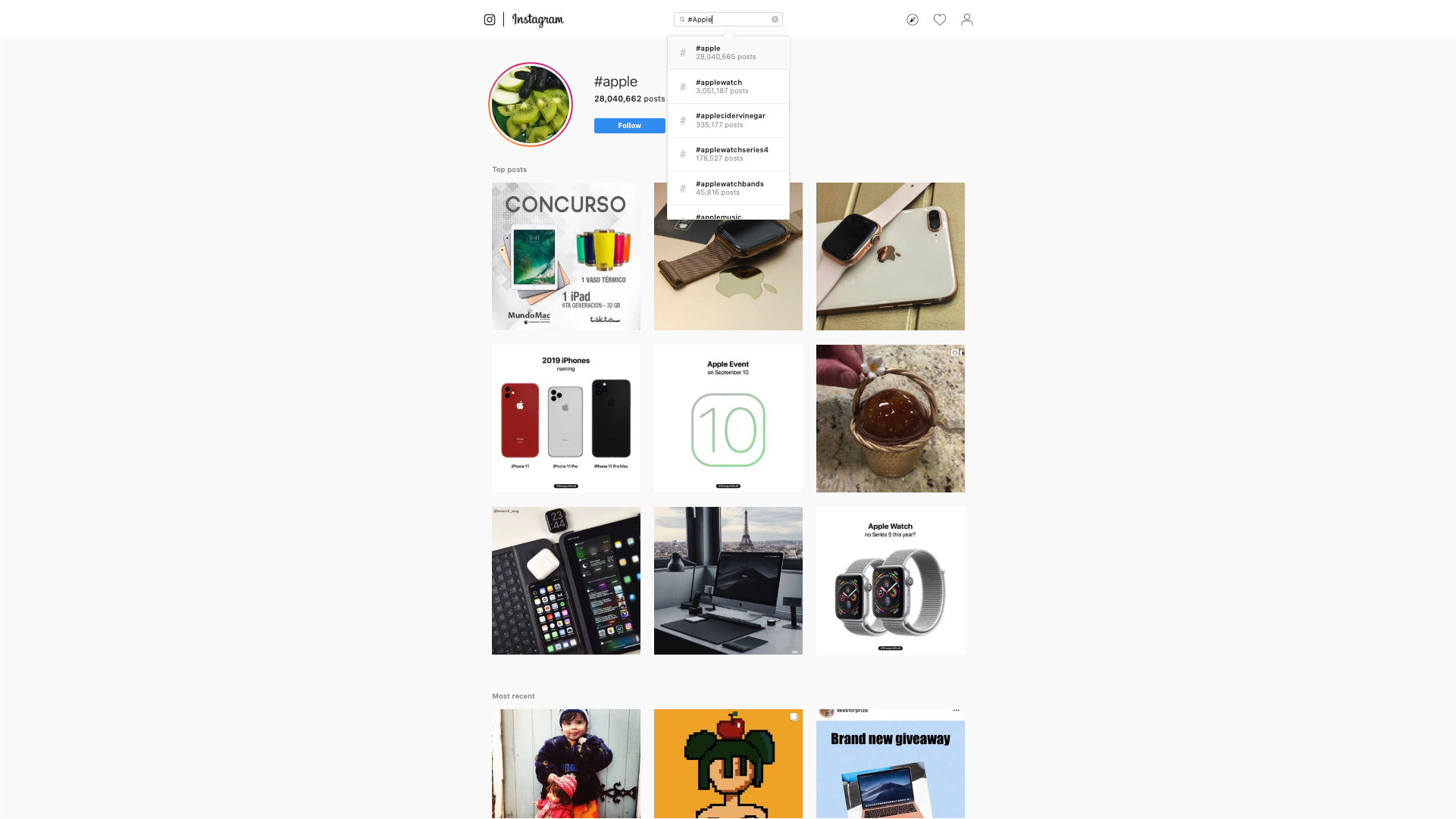
Instead, you’d need to create precise keyword alerts about the Apple products:
- “iPhone XS”
- “iPhone XR”
- “Apple Watch”
…
By doing so, you’d catch all conversations including these specific terms.
Due to Apple products being so mainstream, such a search would probably still be too broad as you’ll be dealing with mentions like the following.
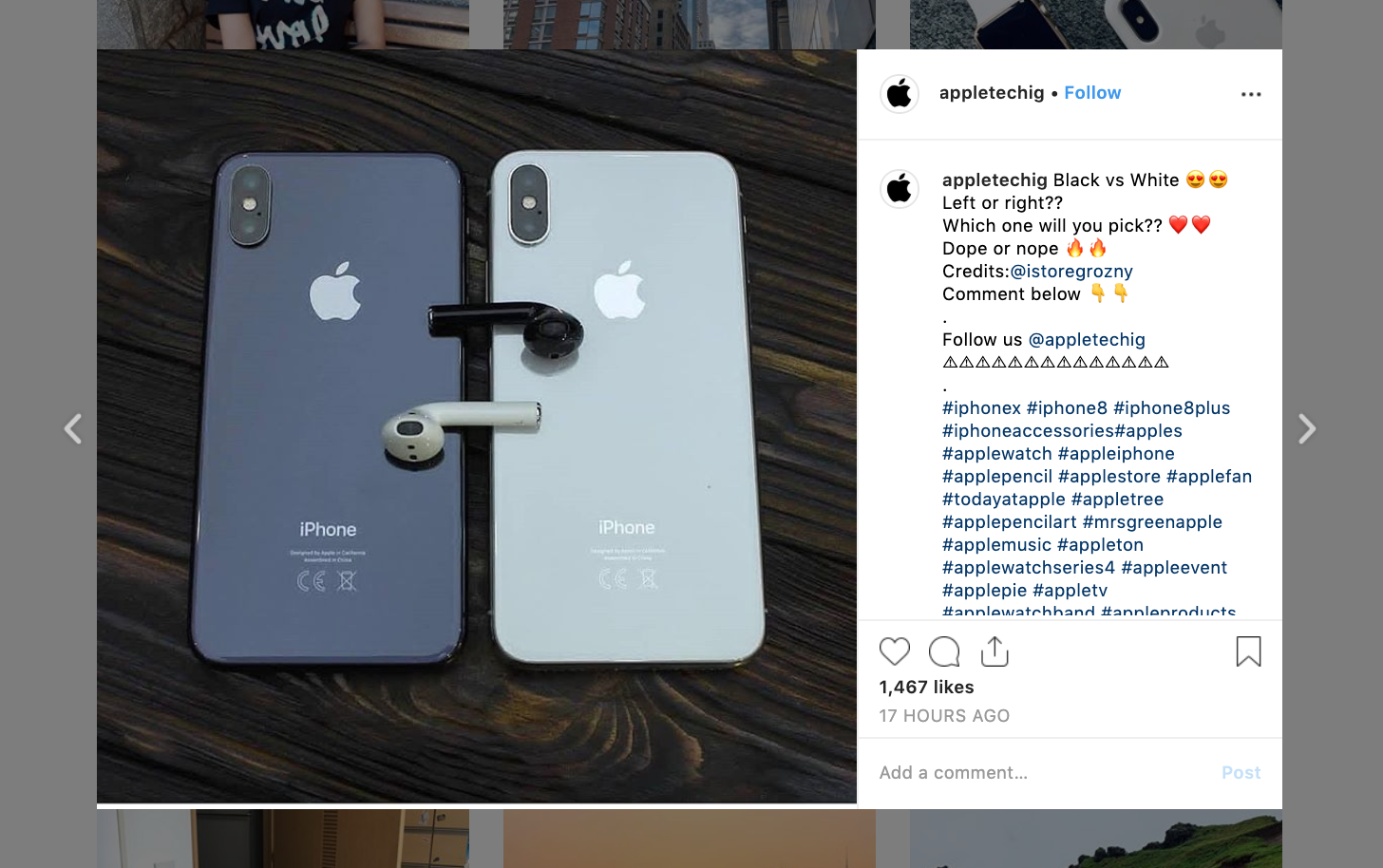
That’s nice, but it’s not generating a lot of value for Apple.
Ultimately, you don’t need to hear how good your products are, over and over again. However, you do need to know if and when something is wrong with them.
To do that, our friends at Apple could very well create alerts on specific conversation including:
- “iPhone XS” AND “explosion”,
- “iPhone XS” AND “battery”,
- “iPhone XS” AND “bending”,
- “iPhone XS” AND “network” AND (“issue” OR “problem”),
By doing so, they’d catch less but more relevant conversations.
The best thing about using a listening tool is that you don’t have to take the time to go look for these key messages. They come to you.
You can also use this guide to learn about more tools and tips for Social Media Listening & How Can It Improve Your Marketing?
Analyze your Instagram performance and impact (and understand it)
“If something important happens that we need to know about, we’re aware of it immediately thanks to social media. We listen to what people say about us and iterate”
Juliette Hervé, Content Marketing Manager @Spendesk
Social listening can be a great addition to other marketing intelligence tools like CRMs and Google Analytics – it will give you subjective information such as:
- Overall online brand sentiment – are customers generally talking positively about your brand? Look out for sudden dips and peaks and figure out why.
- Evolution of sentiment during a specific time period – how are customers reacting to your new product launch or the latest PR crisis? Learn from the experience to prepare for the next event.
- Location of discussions – where (both virtually and physically) are people talking about you? Are you investing enough in customer support and brand advocacy there?
- Top influencers – who are the big guns that are booing or raving about your brand? Identify them and handle them with extra care.
Now, just gathering information won’t be very useful – if you don’t know what to do with it. Let’s see how you can use it to increase your website’s relevance and conversion rates.
2. Segment your website visitors based on who they are
Back in 2013, Janrain (now Akamai) published a stunning study revealing that 74% of consumers are expecting a somewhat relevant experience when landing on a website.
Halfway through 2018, Salesforce released a similar study revealing that 75% of consumers not only expect a relevant experience once on a website but they expect a consistent experience across all channels (web, mobile, in-person, social).
On one hand, it means that you need to make sure that all the CTAs leading to your website match the actual on-page content – so you’re not misleading them.
On the other hand, it means that you need to offer them a relevant experience with your brand.
The ideal scenario would be to create personalized experiences, depending on who each visitor is, what their problem is, and how you’re able to help them solve it. Obviously, it’s not as simple as it sounds.
But then again, no pain, no gain.
The first part of an efficient personalization strategy is segmentation.
The more you know about your audience, the better. And the more you’re able to divide your audience into segments sharing the same characteristics — may it be location, age, past behavior, point of entry on your website, the number of visits, the more you’ll be able to deliver that famous right message, to the right person.
Today, with personalization and smart segmentation, you can do it (partially) and put together experiences based on your previous interactions with a visitor.
Here an example with two visitors:
The first one received and clicked on an email announcing a discount.
The second used specific keywords to find the website on Google.

At the end of the day, they both get a personalized experience.
If you’re having doubts about this, read this comprehensive blog post from Ismael Söw.
Understand that your segmentation will never be perfect and, sometimes, you’ll address the wrong message to some of your visitors. Your task, as a marketer, is to ensure that this happens very little. This means you need to design the most exhaustive segmentation you can think of, based on the data you have.
To do that, you can use the data stored in your CRM:
- Industry of the visitor (if known / relevant)
- Time of the day
- Location
- Age
- Clients vs. Non-clients
As well as the one collected on-site in real-time:
- Time spent on the website
- Number of visits,
- Pages visited,
- Products and categories viewed,
- Time of the day,
- Source of traffic
Crossing these criteria, you can segment your audience in groups, and offer them dedicated experiences and messages depending on who they are and what they’re likely to look for once on your website.
To do this right, you can use extra information from your Instagram Business.
As dreadful as it is sometimes, social media is the best way we found so far to have people speak their mind and share their thoughts, freely.
- What they like
- What they dislike
- What their desires and problems are
As subjective as this may be, this is bread and butter for marketers seeking to share relevant messages with their audience to convert more visitors into clients.
3. Take relevant Instagram trends into account and adapt your brand experience to them
There are millions of ways to increase the relevance of the experience you provide on your website and I obviously can’t address them all.
Here are a couple of examples to give you some ideas.
Display products and brand depending on their popularity
Let’s look at an example with the film Avengers. I wanted to know who the most popular character from the Avengers: Endgame’s worldwide release

After all, Marvel is a cash-machine and brands usually try to jump on the social media trend bandwagon to chime in on conversations. Knowing which characters and franchises trigger the most engagement, retailers could — for example — adapt the content of their personalized emails and on-site experiences.
Automate the segmentation process
The following example has very little to do with Instagram – but I think it’s still worth mentioning as it is, as of today, the best-personalized experience I’ve been offered.
Amazon’s homepage is unique for each and every customer. It’s built based on the products they’ve consulted and/or bought during their past visits.
I’m used to buy veterinarian food for my dog from Amazon. A 12kg bag lasts — on average — a month and a half or so. I was positively surprised to be offered to buy it again about a week before I ran out. This means that one of the segmentation criteria is “Bought perishables” and “will need to buy some more in X days”, taking delivery time into account.
And efficient. This was a perfectly timed reminder and I ordered a new bag for my happy dog.
4. Proactively seek reviews and interaction on Instagram
The last step in leveraging Instagram for business opportunities leads me to three key statistics.
- 84% of people say they trust online reviews as much as peers.
- 91% of consumers say they read online reviews before buying something or subscribing to a service.
- 43% of consumers claim to distrust brands, and 69% distrust advertising.
This means that while messages coming directly from your brand are important, a majority of those listening won’t believe in what you have to say.
The key is to get your users or customers to share those messages for you – this is also known as UGC.
Here are 2 things Instagram is perfect for:
1. Encourage User-Generated Content (UGC)
UGC is basically content created by your audience, for your audience.
It is the perfect type of content to share with your audience because:
- It saves you time
- It allows you to share meaningful branded content that’s not created by you
This is something a brand like GoPro does very well. Over the years, they’ve put together a program rewarding the best images and footage filmed with their camera. If your content – as a user – is selected, you’ll receive compensation, and your content will be shared on their social media channels – where they get thousands of interactions per post.
Go Pro Example #1:
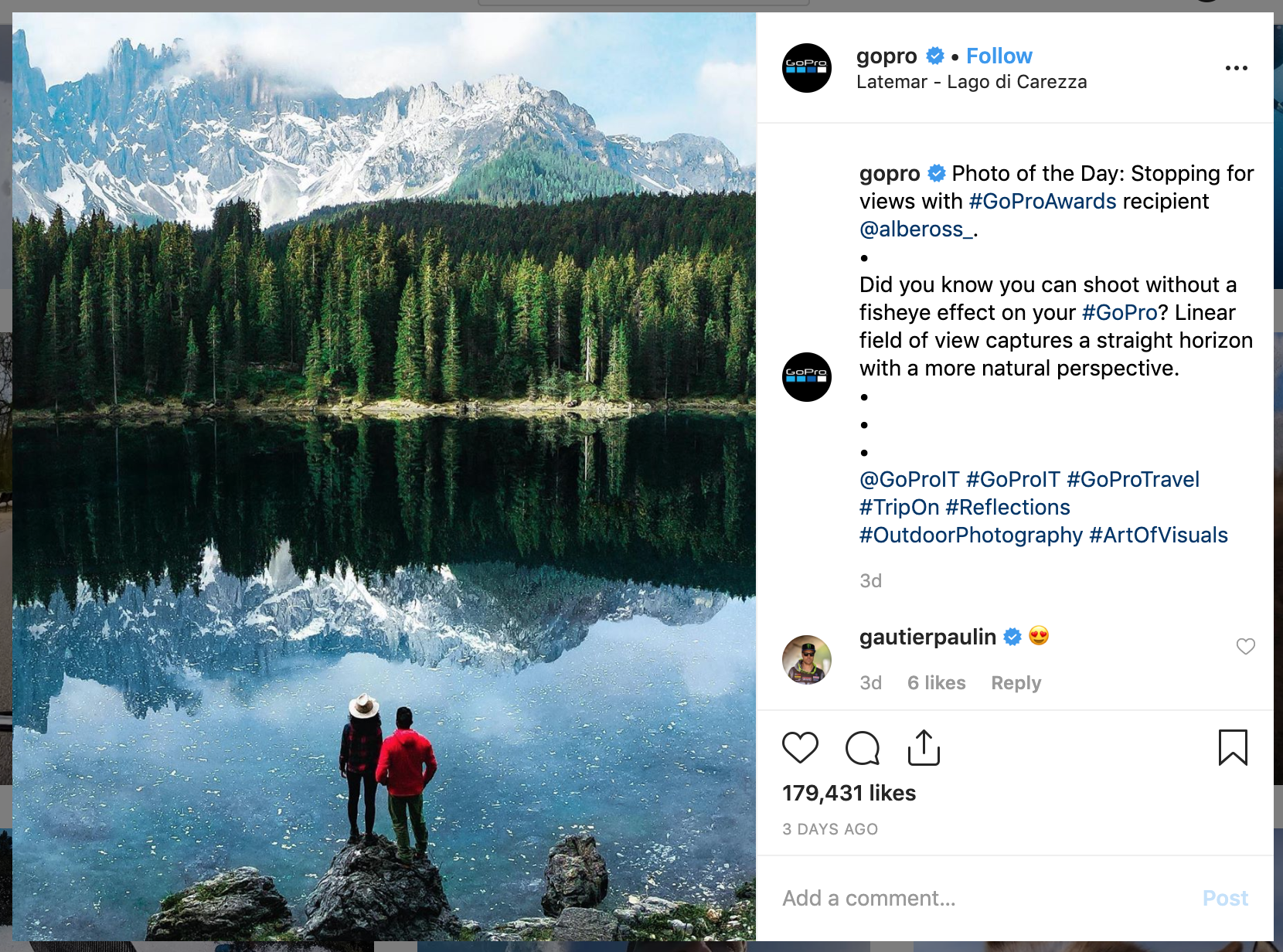
Go Pro Example #2:

Go Pro Example #3:

Yes, notoriety matters. But you don’t have to be as big as GoPro to start a UGC program. You’d be surprised to see how fast your followers will start sending content if they know there’s a catch and that they’ll be credited for it.
Ready to try UGC for your own social media, here’s a guide on How to Leverage User-Generated Content: Examples & Best Practices.
2. Trigger engagement with your brand on social media
One way to trigger engagement is via contests.People always love freebies.Here’s an example with a contest started from Skechers, a footwear brand.
Skechers
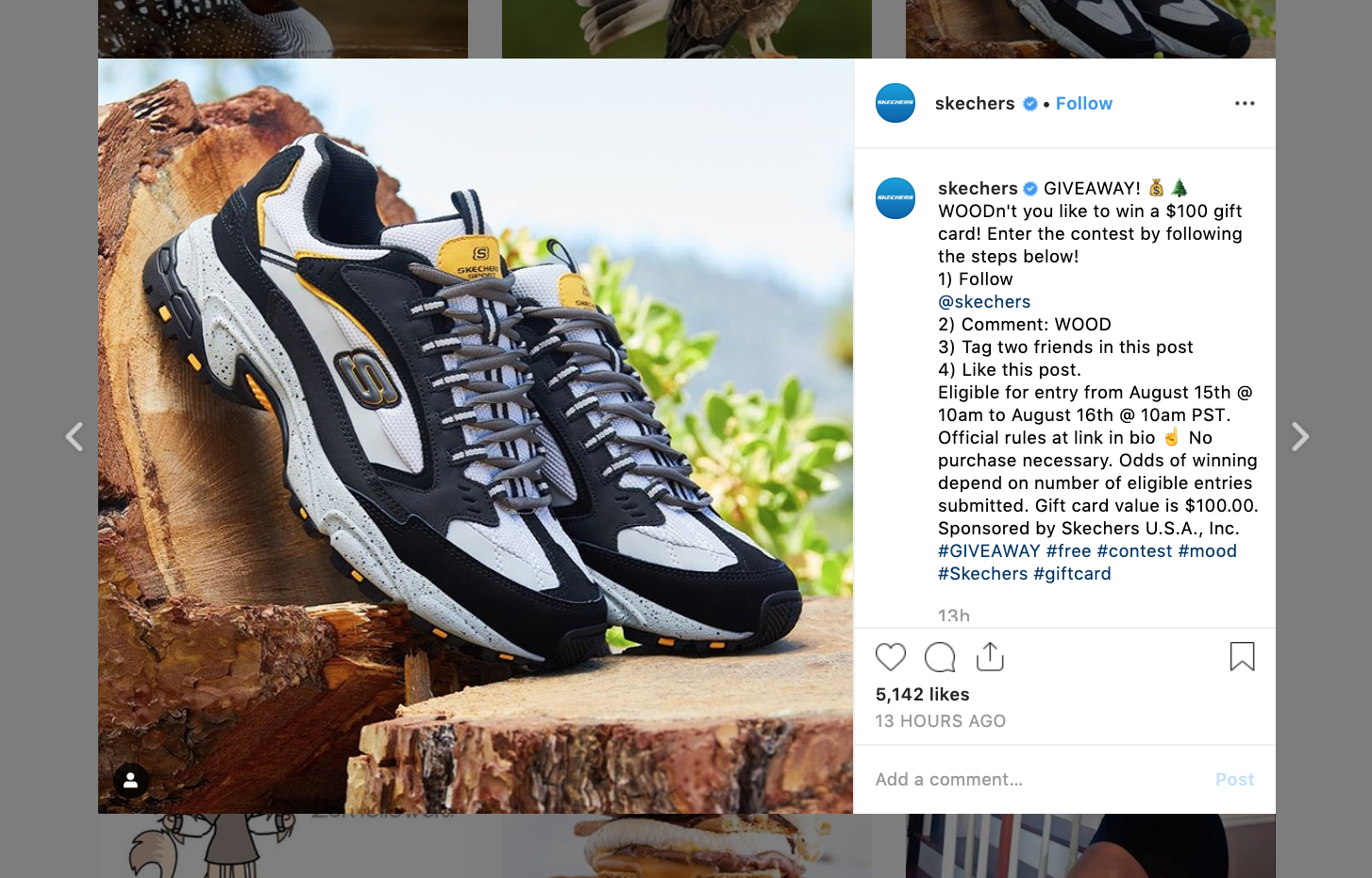
Ready to start your Instagram contest?
Book a free call to learn how our team of contest experts can help you create high converting Instagram contest ads today!
To get even more eyeballs on a contest, you can run it through an influencer. More costly, but also a chance for your brand to reach a much bigger audience.
Here’s an example Spongelle decided to work with Beauty, Skincare and Lifestyle Instagram influencer, working with Shannon Mercier, a with a following of 50K+. In turn Spongelle gets the exposure they need with Shannons followers, bringing sales and followers to their Instagram page.
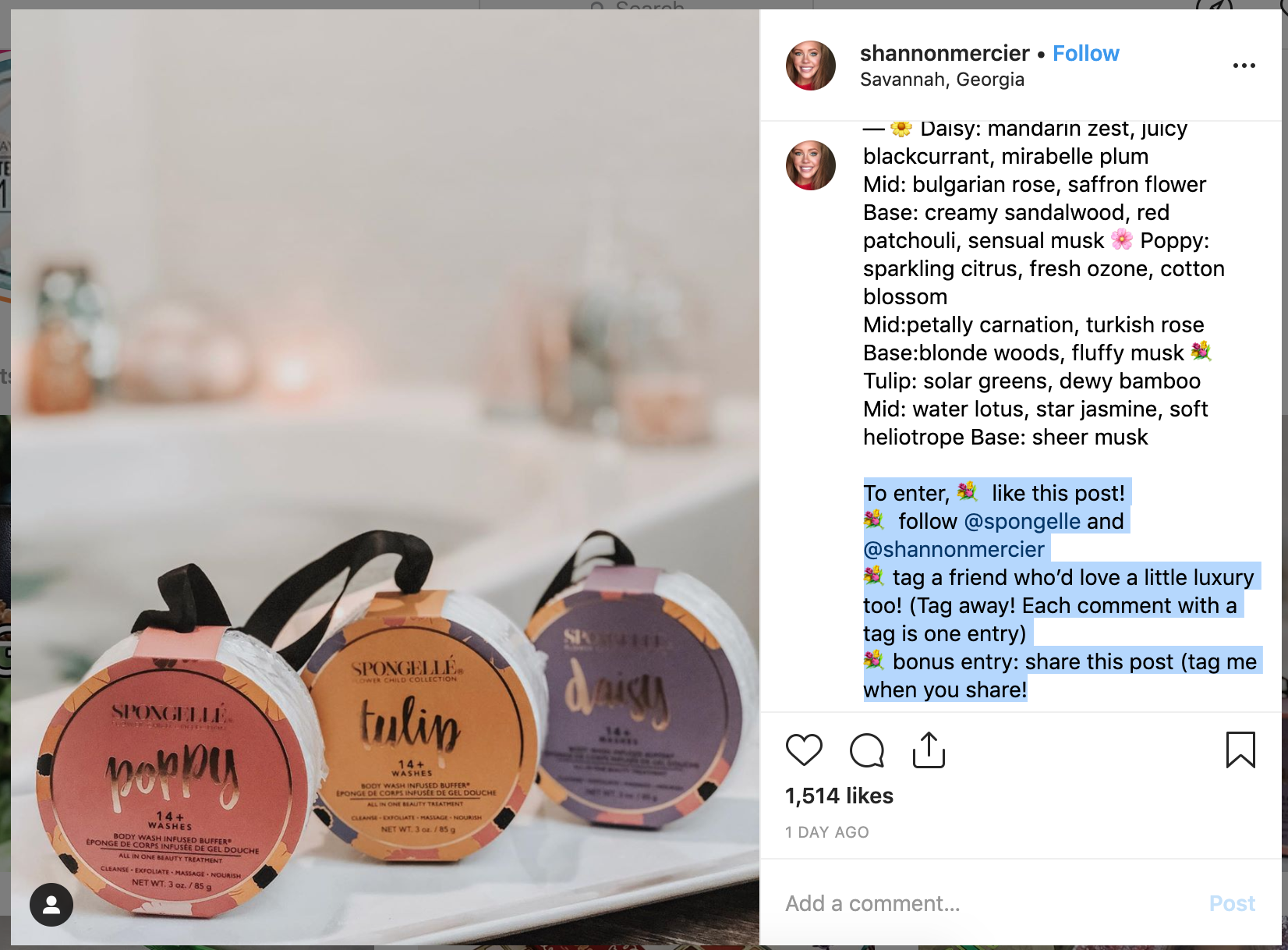
If you’re still not convinced here are 15 Awesome Examples of Instagram Posts that Drive Sales.
Measure, Experiment, Repeat.
There you have it folks. A 4-step plan to increase business opportunities by leveraging Instagram. Remember that your competition is just about a couple of clicks away.
If you don’t try to optimize the overall experience you offer to your Instagram followers and visitors, your competitors will.
To sum up the four steps:
Gather as much information as you can on your market
Segment your audience
Build relevant experienceS
Seek interaction and customer reviews
It’s all about trying different tactics and learning from them. Ultimately, you’ll be able to present your visitors with more relevant experience, and therefore increase your chances to turn them into customers.
About the Author
?

Clément is Content Marketer for Mention. He creates content to help brands manage their online reputation strategy. If not behind a screen, you can find him reading books in Parisian cafés or exploring the city with his dog.

